HardAnodized vs. Stainless Steel Cookware LEAFtv

Hard Anodized Aluminum vs Stainless Steel The Great Cookware Debate
Hard Anodized Vs Stainless Steel Cookware: Differences 1. Material & Construction. Stainless steel cookware is crafted from a combination of metals, typically featuring an aluminum or copper core sandwiched between layers of stainless steel. This construction ensures even heat distribution and durability, making it resistant to staining and rust.
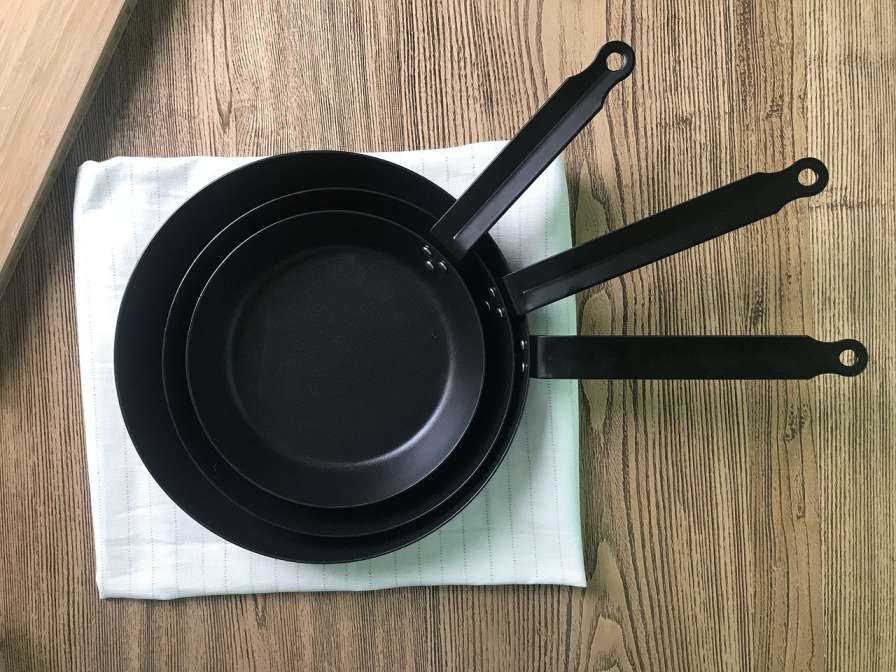
Hard Anodized Vs Stainless Steel Cookware Spadone Home
Con: Not Dishwasher-Safe. Due to its non-stick coating, hard-anodized aluminum cookware should only be hand-washed. The high temperature, harsh chemicals, and sharp utensils in the dishwasher could degrade the non-stick coating. When hand-washing this kind of cookware, never use abrasive sponges or harsh chemicals.
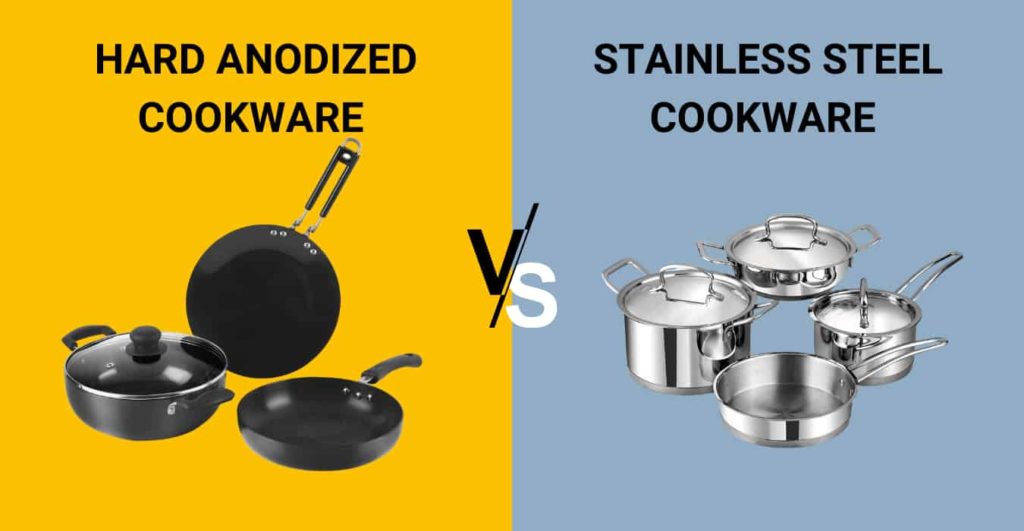
Hard Anodized Vs Stainless Steel Cookware Which One To Go For?
Best Overall: Anolon 11-Piece Stainless Steel & Hard Anodized Aluminum Cookware Set. Best Budget: Cuisinart Stainless Steel 11-Piece Set. Best Ceramic: Caraway Home Cream 7-Piece Ceramic Non-Stick.
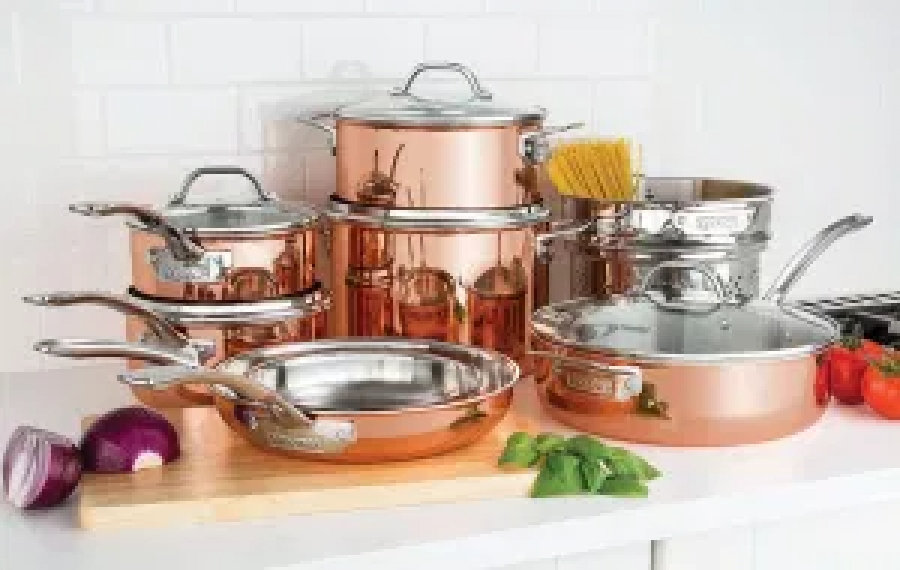
Hard Anodized vs Stainless Steel Full Comparison (Nov 2022)
Hard anodized aluminum is a better conductor of heat than stainless steel, meaning it heats up faster and more evenly. This makes it a good choice for tasks that require precise temperature control. On the other hand, stainless steel cookware may take longer to heat up, but it is less prone to hot spots.
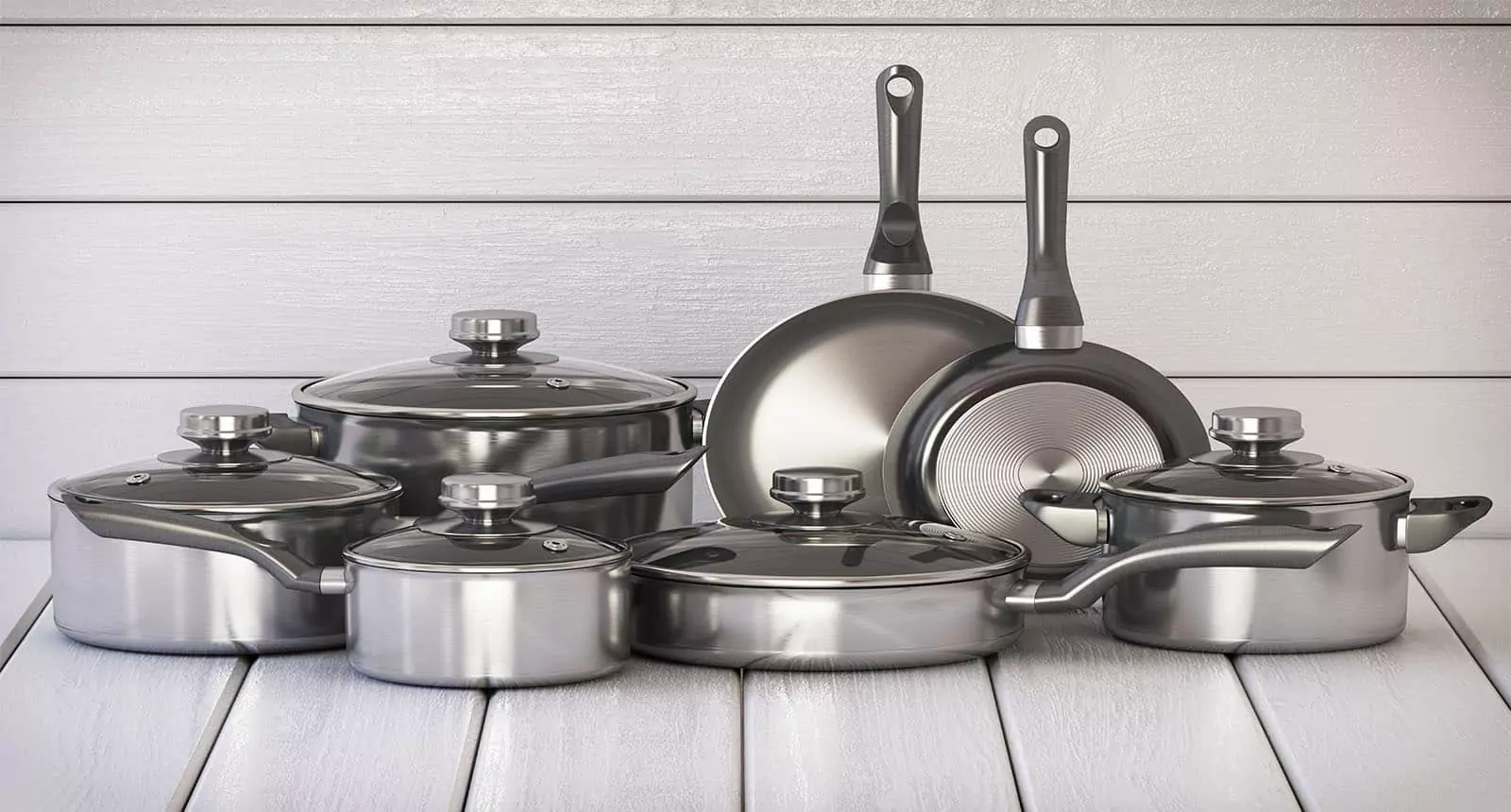
Stainless Steel Vs. Hard Anodized Cookware Which Is Safer?
Cookwares made from anodized aluminum are robust enough to handle most demanding tasks; however, most of them can not tolerate temperatures higher than 450 degrees Fahrenheit. Performance-wise, hard-anodized cookware will offer better heat control, rapid heating, and even distribution compared to stainless steel ones.
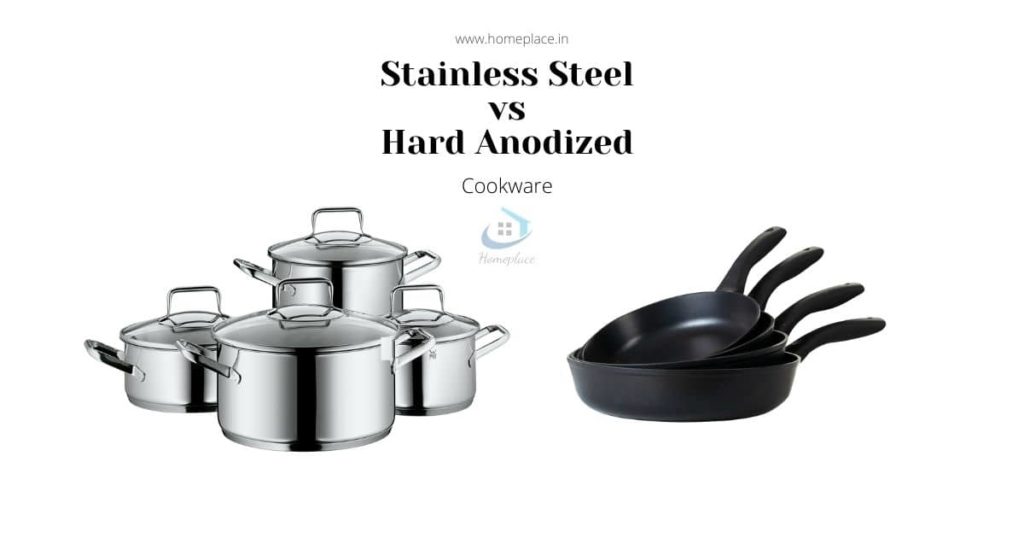
Hard Anodized vs Stainless Steel Cookware Which is Better?
And there is a range of options within both categories. The main differences are: Appearance: Stainless steel is usually polished and has a pronounced shine, whereas hard-anodized aluminum cookware is grey without much variation in aesthetics. Maintenance: Stainless cookware requires more maintenance than hard-anodized aluminum.
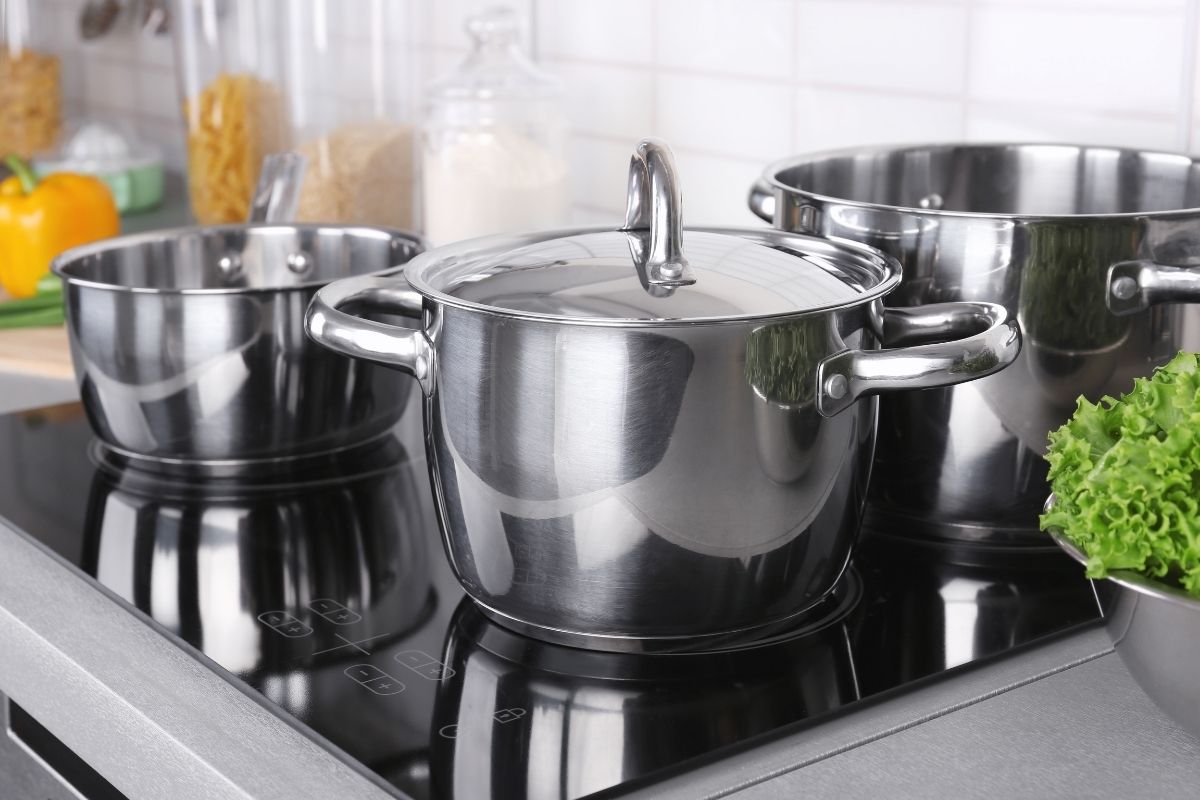
HardAnodized vs Stainless Steel Cookware Spot the Difference (updated
Hard Anodized vs Stainless Steel Cookware Comparison Cooking performance & Heat Conductivity. Winner: Hard anodized . Anodized aluminum cookware is a much better conductor of heat. This means that the pan will heat up quickly and evenly because of how heat transfers from molecule to molecule in the aluminum.

Hard Anodized vs Stainless Steel Cookware Which is Better?
On the other hand, when it comes to its cons, the hard-anodized pans score 3/5, while the stainless-steel pans score 4/5. The score is pretty close. The cons show that both stainless steel pans and hard-anodized pans are heavy and probability that they may be stained over time.
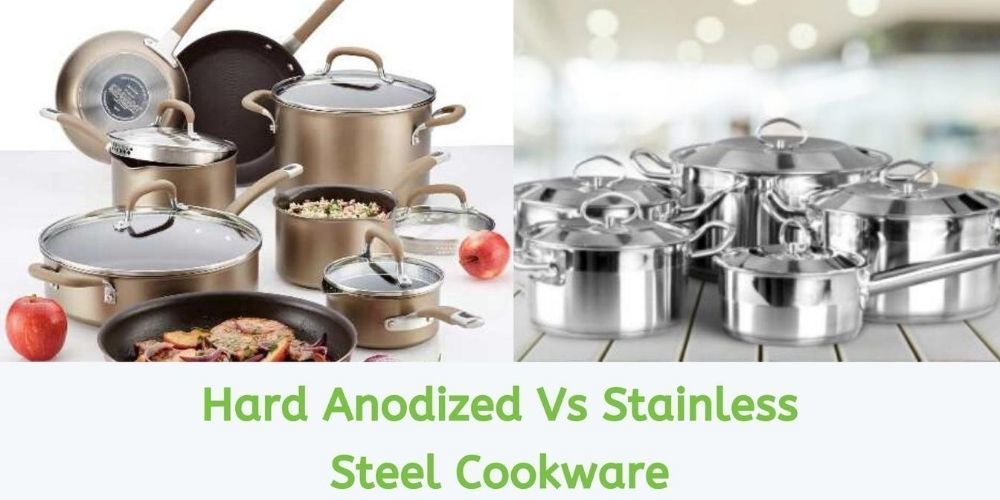
Hard Anodized Vs Stainless Steel Cookware
This process makes aluminum around 30% stronger than stainless steel. One of the biggest benefits is how amazing it is at conducting heat. Since this is where stainless steel falls short, many people will choose hard-anodized cookware over it. The only other material that's better at conducting heat than this is copper.

Hard Anodized Vs Stainless Steel Cookware What’s the Difference
Hard-Anodized Cookware: Hard-anodized cookware is highly durable due to the anodization process. The protective layer makes the cookware resistant to scratches, corrosion, and warping. It can withstand heavy-duty use and is less likely to chip or peel. Stainless Steel Cookware: Stainless steel cookware is also known for its durability.

Hard Anodized Vs Stainless Steel Cookware What’s the Difference
1. Very Durable. Stainless steel is a very durable material such that it is close to indestructible. Forget the annoying chip coating problems like non-stick, stains like enamel, or rust like cast iron cookware. The more quality the stainless steel is the more hard the surface.
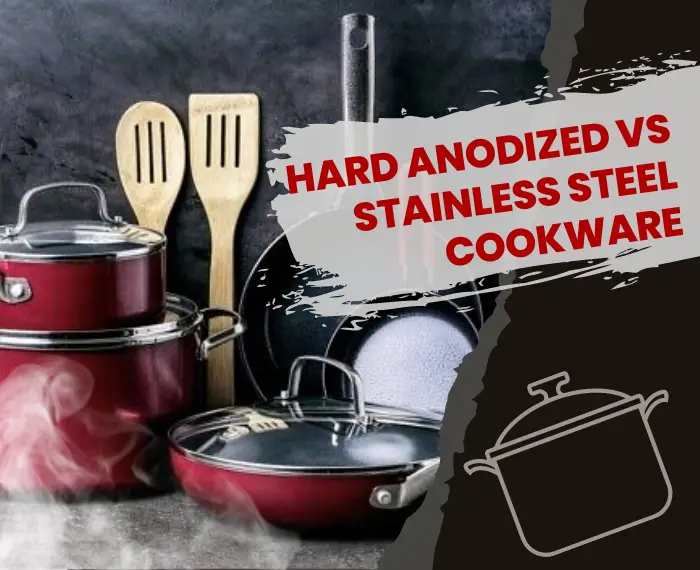
Hiro Asian Kitchen Hero Kitchen
Hard anodized cookware is low maintenance, but it isn't dishwasher-safe. "After cooking, use a non-abrasive cleanser and make sure to lift any discoloring," Narins recommends. Using a dish.

Hardanodized Aluminum Vs. Stainless Steel Cookware A Faceoff Home
Hard-anodized cookware is the most durable kind of cookware. It has incredible strength because of the additional coating, making pots and pans more sturdy. Also, you can use it to cook more easily and faster and use any material or utensils in it. Hard-anodized aluminum has excellent heat conductivity.

Hard Anodized vs. Stainless Steel Cookware What's the Difference?
12 Differences between Hard Anodized Aluminum and Stainless Steel Pans. Stainless steel and hard anodized aluminum are excellent options for cookware, each serving distinct purposes. Incorporating both in a versatile kitchen setup can greatly enhance your culinary experience. Let's explore the key disparities between these two materials. 1.

Hard Anodized Vs Stainless Steel Cookware,What’s the Difference YouTube
On the other hand, hard-anodized aluminum can still get pretty costly but will only last up to five years. Even if you spend near the same amount as it costs for stainless steel, you won't get as much use out of the cookware. What Makes Stainless Steel the Winner? Stainless steel gave hard-anodized the 1-2 punch and kept them down for the count.
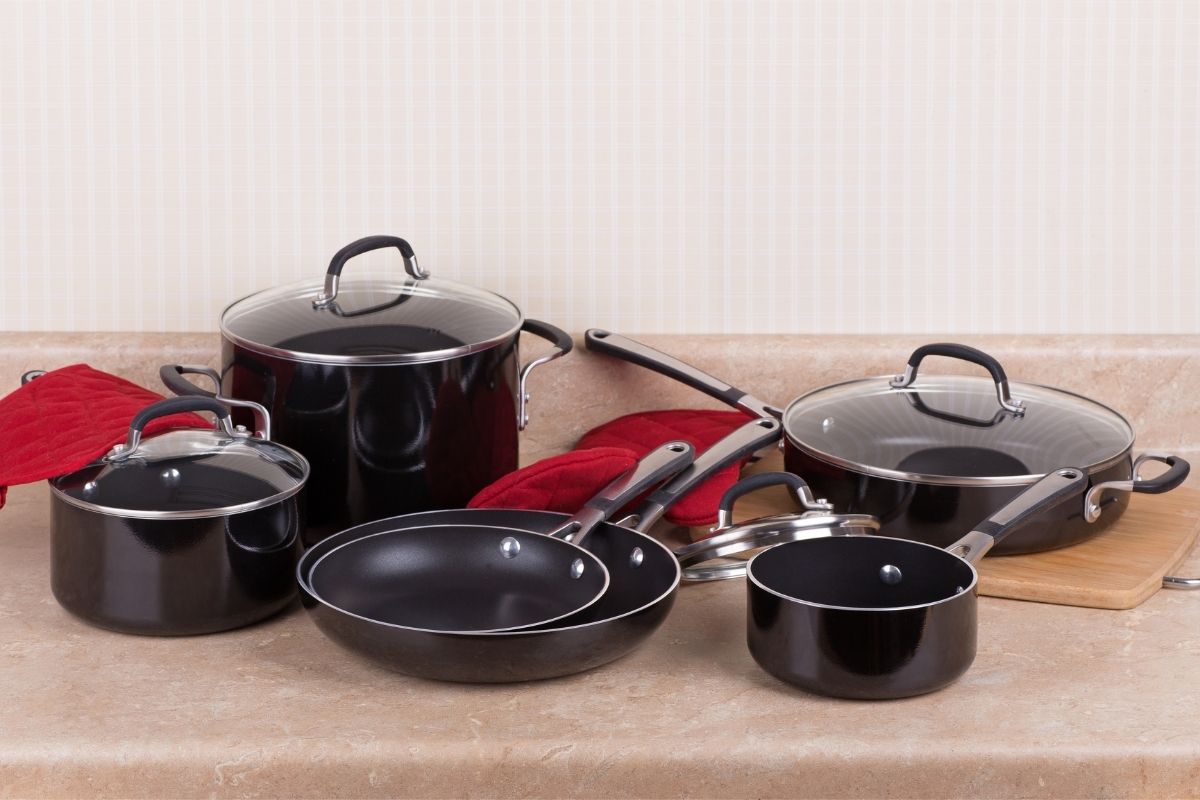
HardAnodized vs Stainless Steel Cookware Spot the Difference (Updated
Hard anodized cookware is a popular choice among professional chefs and home cooks alike due to its several advantages: Durable: Hard anodized cookware is made by treating aluminum with an electrochemical process that makes it up to 30% harder than stainless steel. This makes it more resistant to scratches, dents, and warping.